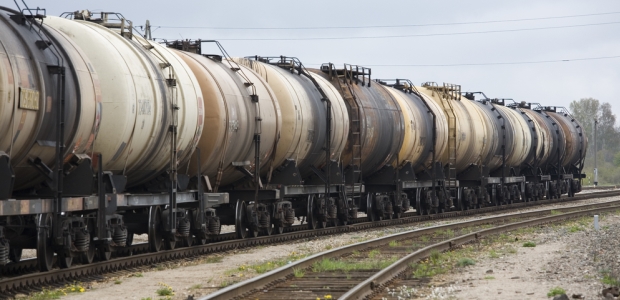
DOT Agencies Evaluating Railroads' Security Plans
FRA and PHMSA are working together on audits to make sure the safety and security plans address the vulnerabilities cited in the Aug. 7 Emergency Order No. 28.
The Federal Railroad Administration and the Pipeline and Hazardous Materials Safety Administration have issued a safety advisory to reinforce to railroads the importance of properly classifying Class 3 materials and ensuring the railroads' safety and security plans address the vulnerabilities cited in FRA's Aug. 7 Emergency Order No. 28. That order told the railroads to take steps within 30 days to ensure trains moving hazardous materials do not move while unattended and possibly cause a disaster similar to the July 6, 2013, derailment and explosion of a train carrying crude oil in Lac-Mégantic, Quebec, Canada.
Class 3 materials are flammable and combustible liquids. To move a large bulk quantity (792 gallons – 3,000 liters – or more), railroads must develop and adhere to a transportation safety and security plan that covers personnel security, unauthorized access, and en route security. The new advisory says FRA and PHMSA are working together on audits to make sure the safety and security plans address the vulnerabilities cited in the emergency order, and also that PMHSA is making unannounced inspections and testing to verify material classification and packing group assignments by offerors of crude oil for transport.
The two DOT agencies also issued a joint safety advisory on Aug. 7.
The Lac-Mégantic explosion and fire killed 42 people, with five more presumed dead, and extensively damaged the town. "While the Transportation Safety Board of Canada is still investigating the cause of the Lac-Mégantic accident, the catastrophic consequences of the accident and the known increase over the last several years in the rail transportation of Class 3 hazardous materials has made clear the need to review existing regulations and industry practices related to such transportation," the new advisory states. "PHMSA and FRA have worked closely to take a number of actions intended to prevent similar incidents from occurring in the United States and the agencies will continue to do so."